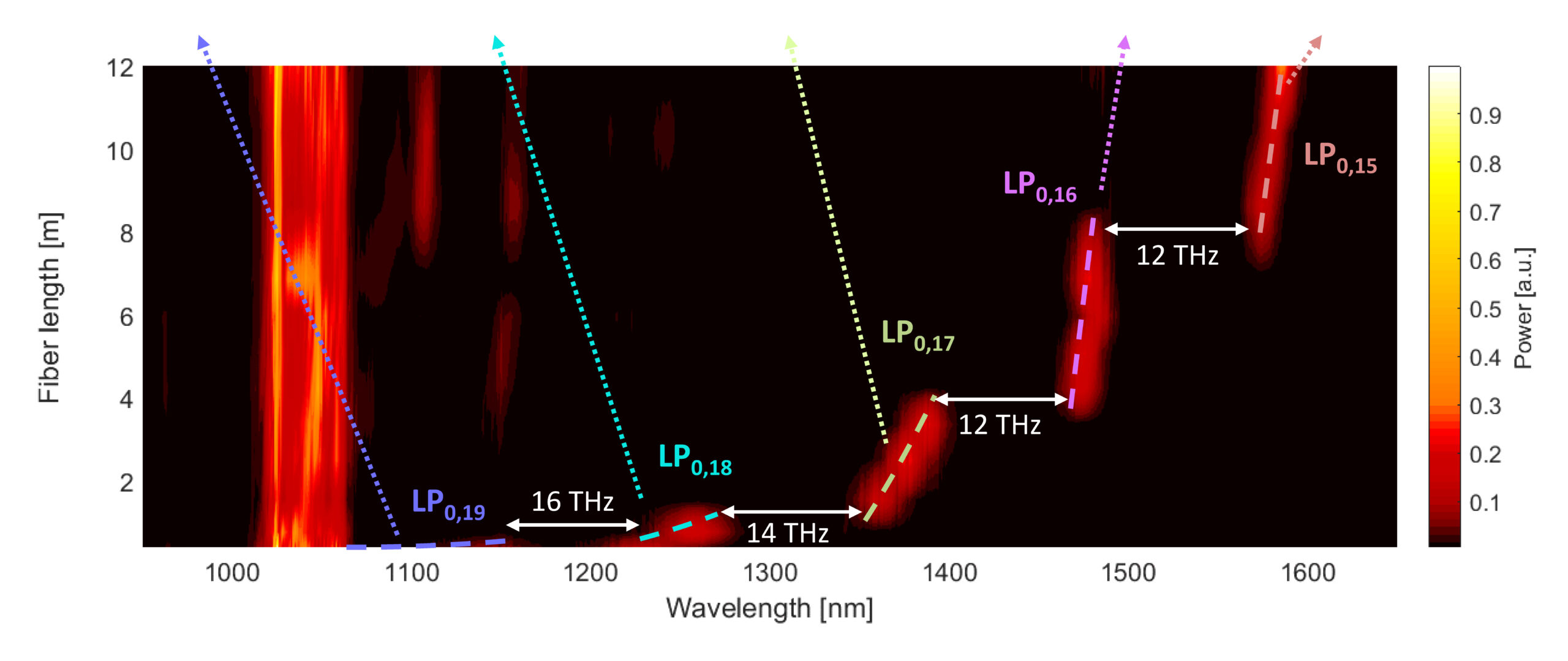A Step Forward for High-Power Fiber Optics
By Liz Sheeley
High-power lasers are crucial for biological imaging in research, manufacturing, and remote sensing, but most in use today are built with bulk crystals. Those types of lasers require careful alignment and maintenance, are expensive and often not portable. Optical fiber lasers offer solutions to all of those shortcomings, but developing short-pulse, high-power fiber lasers at desired wavelengths is challenging. Now, Professor Siddharth Ramachandran (ECE, MSE) and his lab have observed a new effect within fiber optics that opens up a stable and effective way to develop and use a fiber-optic cable to create a laser that can produce high-power light at desired colors. Their work has been published in Optica.
“This paper is a satisfying conclusion of experiments where we were able to achieve the laser performance of interest to biomedical imaging, out of a compact flexible optical fiber for the first time,” says Ramachandran.
Ramachandran’s lab is positioned to do this work because of their expertise in what’s known as multi-mode fiber optics, a field in which one can control the physical path that light takes as it propagates through a fiber.
Lars Rishoj, a senior research scientist at BU and the first author on the study, says that their results were surprising because the light behaved in a completely new way. It traveled in what’s known as a soliton, or a solitary wave packet that self-propagates without distortions. In contrast to conventional single mode fibers, however, owing to the multiple pathways allowed by multimode fibers, these solitons were found to discretely jump across a wide range of wavelengths. By studying the variables of this phenomenon, the researchers were able to choose the wavelength as well as power of light pulses that emanated from the fiber.

“When we discovered this new effect in multimode fibers, exclusive to short pulses of light, short meaning roughly a tenth of a trillionth of a second, we thought it was interesting, but debilitating to the experiment we were then conducting,” says Ramachandran. “But soon we realized that this ‘lemon’ could result in ‘lemonade’ because the effect is useful for a new way to create very high-power, short-pulse lasers, of the kind especially useful for imaging deep in the brain.”
By demonstrating their technique with a light wavelength output of 1300nm, a significant wavelength commonly used to image inside cells in laboratory research, the researchers showed a real-world application of multi-mode fibers in their study. Since their output is directly from a flexible fiber, it could also be used for endoscopy or for developing tethered, wearable microscopes.
“More fundamentally, the process works at any wavelength,” says Rishoj. “You can basically take any laser, and using this process, you can shift the light to a longer wavelength.” This could lead to new ways to develop lasers in the crucial mid-infrared spectrum.